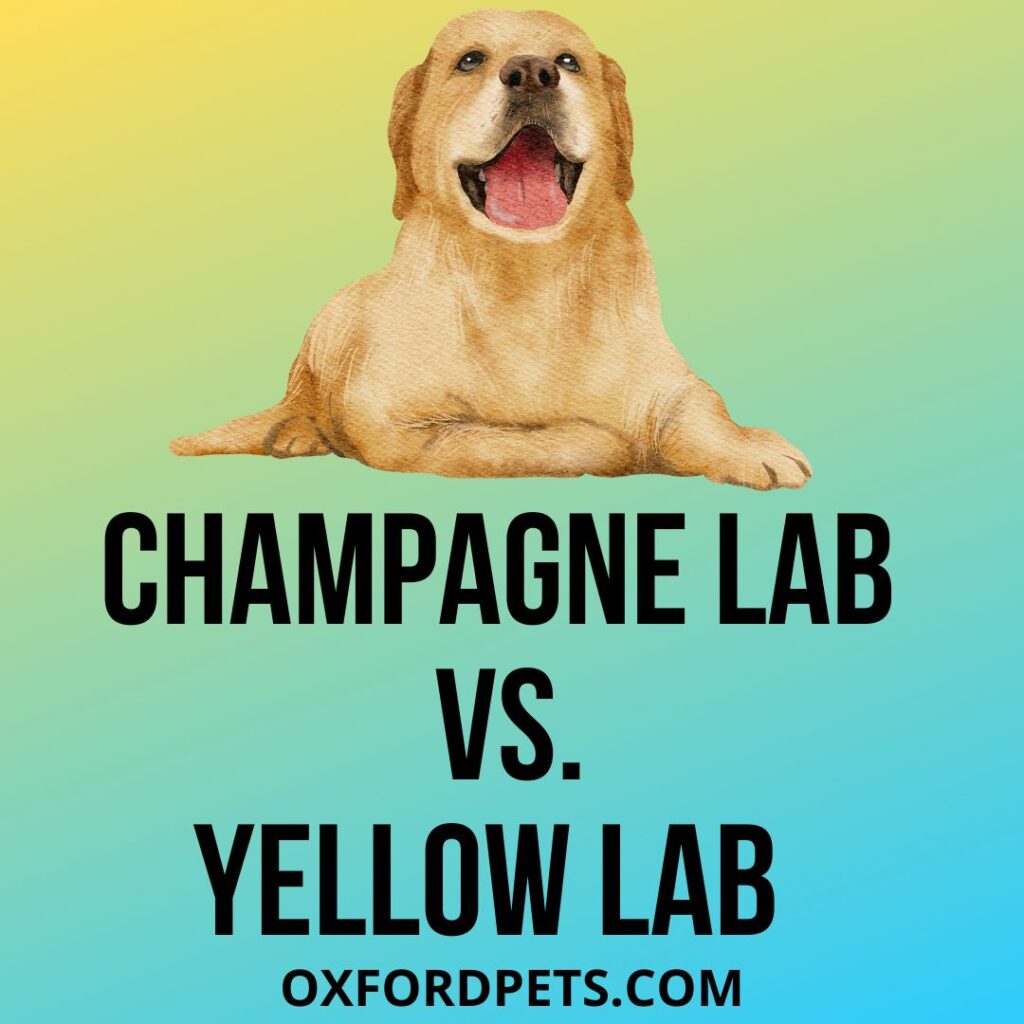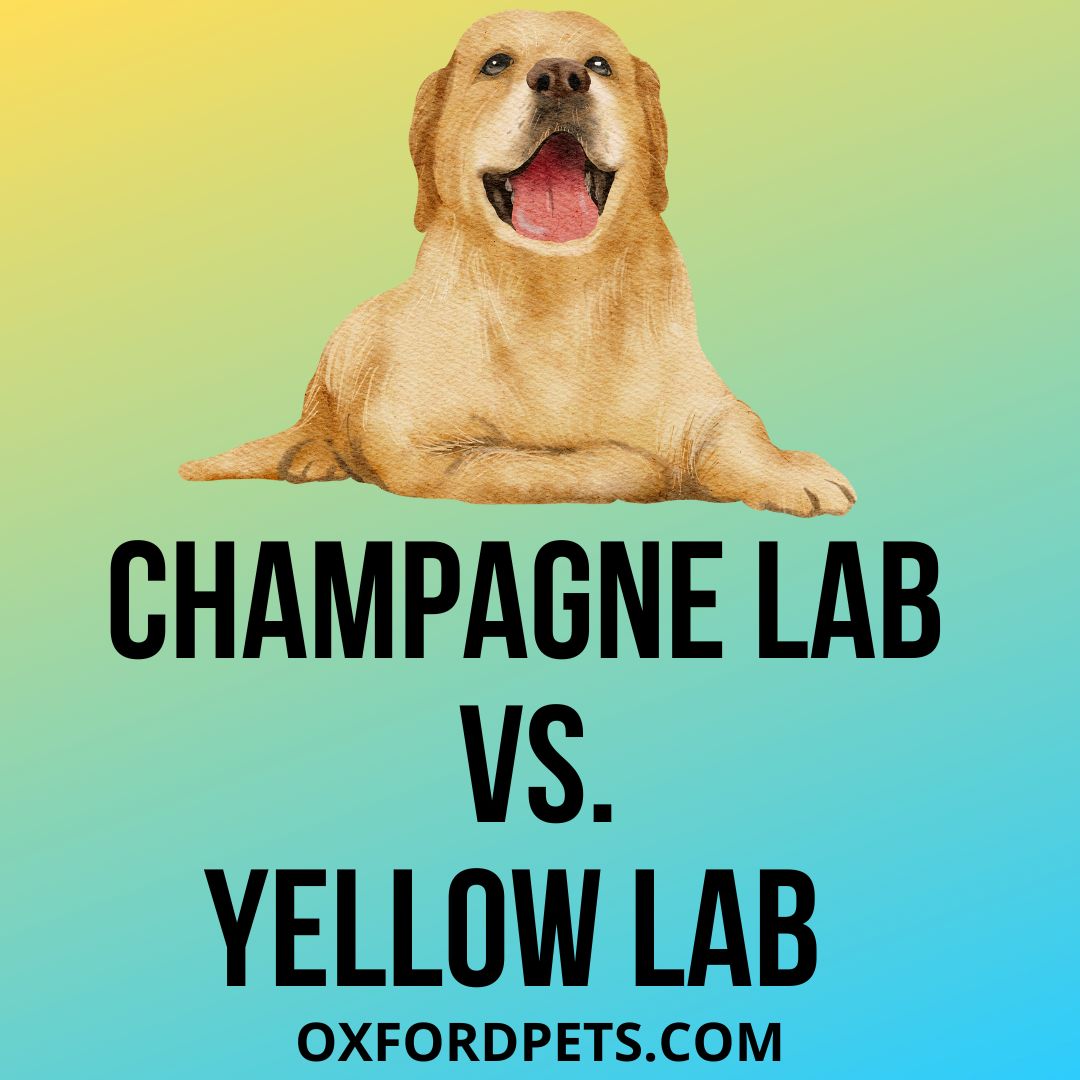Champagne Labrador Vs Yellow Labrador Differences and Comparison: Here is the comparison between Champagne Labrador and Yellow Labrador. I hope you enjoy the article as much as these labs enjoy playing with you.
Contents
- Champagne Labrador Vs. Yellow Labrador: Comparison
- Labrador grooming and care
- What colour Lab sheds the least?
- What are yellow Labs known for?
- At what age does a Lab calm down?
- Do Labradors bark a lot?
- How long can Labrador be left alone?
- Can yellow Labs be aggressive?
- Are Labradors better in pairs?
- Why do yellow Labs’ noses turn pink?
- Final words
Champagne Labrador
Champagne labradors are just yellow labradors with slightly different colour due to genes. These labs look just like Dudley labs or Yellow labs in pictures. However, in person, they have a bit of a shimmer on their coat.
Moreover, the American Kennel Club suggests that Campagne colour is not there in labradors. All the Champagne labs are yellow labs. However, it is worth mentioning that champagne labs have a bit different colour than yellow labs. They are just mutated labs from the yellow one.
These labs are very much prone to heat exhaustion due to their shimmery coat. With a lighter nose, champagne labs make them unique in their own way.
Yellow Labrador
The Yellow labs can have different ranges of colours. Yellow labradors have light brown coloured coats that can appear yellow in colour. Moreover, yellow labs are considered to be the friendliest labs.
Champagne Labrador Vs. Yellow Labrador: Comparison

Genetics
The reason for the difference between champagne labs and yellow labs is genes. To be specific, champagne labs have the “d” gene. These labs need two parents with a recessive “d” gene rather than a dominant “d” gene. Here is the way to visualise this:
- Yellow labradors have DD gene alleles
- They can also have Dd gene alleles
- Champagne Labradors must have dd gene alleles
As the “d” gene is rare and both the apartments must have it, champagne labs are rare to be born.
Health
Talking about the yellow labs, the most common health issues they face is dysplasia, arthritis, and stiffness in elbows.
As champagne labs are rare, they are more prone to inadequate breeding. In this procedure, they can fall prey to various diseases like
- Heart issues
- Gastric dilation
- Hereditary eye disease
- Elbow and hip diseases
Nose
Champagne labs have a lighter nose than yellow labs. Gglrc.org says that this is because of the genetic dilution that happens between the parents. Moreover, everything in them is a bit lighter than in yellow labs. This includes the nose, coat, paws, etc.
Yellow labs have solid black noses and get lighter as they age. These are not born with genetic dilution. As their name suggests, they have yellow coats and dark brown eyes.
They are the same
Many animal websites claim that champagne labradors are just a genetic alteration of yellow labradors. And this is true. As we have already seen their genetics, it is very evident that champagne labs are yellow labs with a bit of a shimmery coat. This shimmer is due to the “dd” genes they carry from their parents.
Offspring coat
Both these labs can produce the same offspring coat. This means you can have a champagne lab and a yellow lab puppy from the champagne or yellow lab.
There is just a difference in genetic mutation between them. However, this can be easily bred if you have these 2 dog parents. Because of so much similarity, breeders have difficulty in maintaining variations of silver, charcoal-coloured, and champagne labs.
Even though they have slightly different appearances, they are the same inside. They are loving and easy to train dogs and make excellent pets.
Size and life expectancy
Champagne labradors and yellow labradors have the same size. This is due to their almost similar traits. The males grow up to 22.5 to 24.5 inches in height and weigh around 65 to 80 pounds. Talking about the females, they grow upto 21.5 to 23.5 inches in height and weigh around 55 to 70 pounds. Their life expectancy is around 10 to 12 years.
Temperament
Except for their coat colours, both the labs have the same temperament. Champagne labs and yellow labs are very active and can be used during retrieving and hunting. Moreover, because of their friendly nature, they are very much used as family dogs.
Labrador grooming and care
Whether your pooch is a champagne lab or yellow lab, taking care of the coat is very very important. These cute furballs have short and dense fur that is easily prone to matting and heavy shedding. Therefore, you need to brush your lab at least 2-3 times a week. This will mitigate the shedding and keep the fur looking sleek.
Also, regular brushing helps you distribute the natural skin oils for a healthier coat. Additionally, you can also use a vacuum here.
You have to bathe your lab once every month with canine shampoo. If you bathe your lab too often, it can eliminate the healthy oils present in its skin. Therefore, it is better to avoid bathing your canine more often.
What colour Lab sheds the least?
All colour labs shed the same. Coat colour does not determine the amount of shedding or required grooming. It’s the same for all. It is a rubbish mth that one colour lab will shed more or less. Hence, the end story here is all the labs have the same traits irrespective of the coat colour.
What are yellow Labs known for?
Yellow labs are mostly known for their roles as guide dogs. They help the blinds by being a good guide dogs. However, labrador retrievers are one of the favourite pets in the world. More than any other lab, yellow labs are seen as family and companions.
At what age does a Lab calm down?
Labs usually calm down between the age of 2 and 4 years. They do not start settling down before 2 years. Some labs are sedate and quiet from an early age, and a few are live puppy maniacs till the age of 2-4. However, as they grow old, you can see mental maturity in them.
Do Labradors bark a lot?
The answer to this question is NO. To be honest, labs are not “barky” dogs. They are bred to be gentle and easily socialised canines. With the right reinforcement and training, labs gain good behaviour.
How long can Labrador be left alone?
You can leave your lab alone for no more than 4 hrs. Separation anxiety is most common in Labradors. If you have a puppy, you must not leave him alone for more than an hour. Altogether you should avoid keeping your lab alone for more than 8 hours. This can instigate them to be anxious and destructive.
Can yellow Labs be aggressive?
It totally depends on how you treat and train them. If the yellow lab is not treated in a good way, he may end up acting aggressively. Therefore, it is up to you to train your yellow lab properly and avoid situations like this.
Are Labradors better in pairs?
Labs are very social animals. Moreover, they are excellent family pets. Therefore, you can consider getting a second canine. There is nothing bad or harmful in it.
Why do yellow Labs’ noses turn pink?
If your yellow lab’s nose has turned pink, especially in winter, then your pooch may have a “winter nose” or “dog snow nose’. thi s condition is a part of hypopigmentation. Moreover, it causes the dog’s nose to lighten.
Final words
There are not many witnessing differences between the champagne labs and the yellow labs. However, there are many similarities between the two. Therefore, the small difference between both is because of the genetic dilution which we called a mutation.
However, both the labs are loving, adorable, and friendly. Therefore, there is no comparison between them in terms of the love they give.
I hope you enjoyed the article. I will be back soon with more interesting and informative articles. Till then, stay connected. Thank you.
